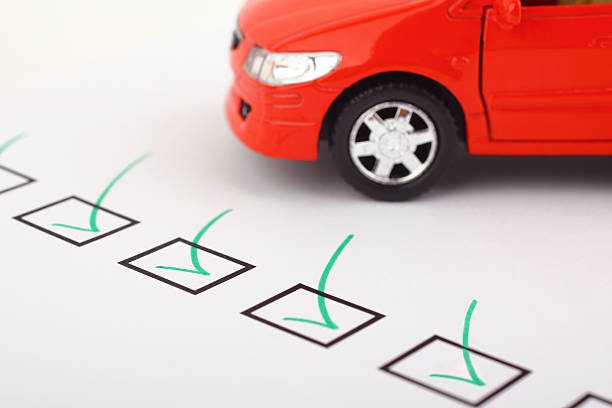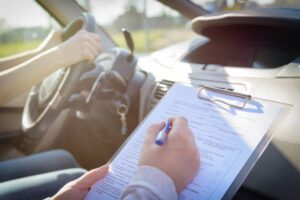In South Africa, driving licences are classified by codes that specify the types of vehicles a driver is legally permitted to operate. One of the most common is the Code 10 licence. This classification allows holders to drive certain categories of vehicles, providing opportunities for employment and transport versatility. Here’s a breakdown of what a Code 10 licence entails, the process to acquire it, and the vehicles it authorizes drivers to operate.
Understanding the Code 10 Licence
A Code 10 driver’s licence, also known as the C1 licence, is an intermediate driving permit in South Africa, falling between the basic Code 8 (B licence) and the heavier Code 14 (EC licence). The Code 10 is primarily aimed at vehicles weighing between 3,500 kg and 16,000 kg, providing a flexible option for drivers who need to operate larger vehicles without obtaining a full heavy-duty licence.
Which Vehicles Can You Drive with a Code 10 Licence?
A Code 10 licence permits the holder to drive:
- Light-duty trucks and vans: Vehicles that fall under the specified weight limit, typically used for transportation of goods over short distances.
- Mini-buses and some passenger transport vehicles: Code 10 holders can operate certain passenger vehicles, making this licence valuable for those seeking employment in public transport.
- Vehicles with trailers (restricted to certain weights): While Code 10 drivers can tow trailers, the trailer’s weight must be appropriate for the licence type.
This licence category does not permit driving standard passenger cars under Code 10, though a driver with a Code 10 may also hold a Code 8 licence to legally drive smaller passenger cars.
Why is the Code 10 Licence Popular?
The Code 10 licence is popular among South African drivers for a few key reasons:
- Employment Opportunities: Many entry-level driving positions in South Africa, especially in public transport or goods delivery, require a Code 10 licence. The qualification opens doors in sectors like logistics, passenger transport, and trade.
- Versatility: This licence type is often sufficient for those who may not need the more extensive training and cost associated with a Code 14 licence but still want to operate larger vehicles.
- Training Accessibility: Acquiring a Code 10 licence requires specific but achievable training, making it a feasible option for individuals looking to upgrade from a Code 8 without significant additional costs.
Steps to Obtain a Code 10 Licence in South Africa
- Meet the Age Requirement: Applicants must be at least 18 years old to apply for a Code 10 licence.
- Complete the Learner’s Licence Test: Before taking the driving test, candidates need a learner’s licence for a Code 10 vehicle. The test assesses basic driving knowledge, traffic signs, and road safety.
- Take Driving Lessons: Practising with a registered driving school that offers Code 10 training is essential. Lessons typically cover vehicle control, road safety, and handling larger vehicles with additional blind spots.
- Pass the Code 10 Driving Test: The Code 10 driving test evaluates the driver’s ability to control the vehicle, perform manoeuvres, and demonstrate a thorough understanding of road rules. The test is conducted on public roads and includes reversing, parking, and basic driving proficiency.
- Receive Your Code 10 Licence: Upon passing the test, applicants receive their official Code 10 licence, allowing them to legally operate vehicles under the C1 classification.
Key Differences Between Code 8, Code 10, and Code 14 Licences
- Code 8 Licence (B Licence): Allows driving light motor vehicles, including standard passenger cars and small vans, up to a maximum weight of 3,500 kg.
- Code 10 Licence (C1 Licence): Permits operation of larger vehicles between 3,500 kg and 16,000 kg, such as light trucks and mini-buses, but not passenger cars unless a Code 8 is also held.
- Code 14 Licence (EC Licence): Required for operating heavy-duty trucks, articulated vehicles, and buses exceeding 16,000 kg, typically involving commercial long-haul transport.
Frequently Asked Questions
Can I Drive a Car with a Code 10 Licence?
Yes, but only if the driver also holds a Code 8 licence. A Code 10 licence alone does not cover standard passenger vehicles.
Is the Code 10 Licence Valid Outside South Africa?
Code 10 licences are valid only in South Africa and may not be recognized in other countries. Drivers who need to operate similar vehicles internationally often require a different licence or an International Driver’s Permit (IDP).
How Long is the Code 10 Licence Valid?
Like other South African driver’s licences, the Code 10 is valid for five years, after which it must be renewed.
Conclusion
The Code 10 driver’s licence serves as a valuable qualification for South Africans looking to drive mid-sized vehicles professionally or for personal use within specified weight limits. It provides a balanced option for individuals seeking to handle larger vehicles than those covered by a Code 8 but not yet needing a full heavy-duty licence. With increasing demand for drivers in various sectors, the Code 10 remains a strategic choice for those aiming to expand their driving capabilities and employment opportunities in South Africa.



